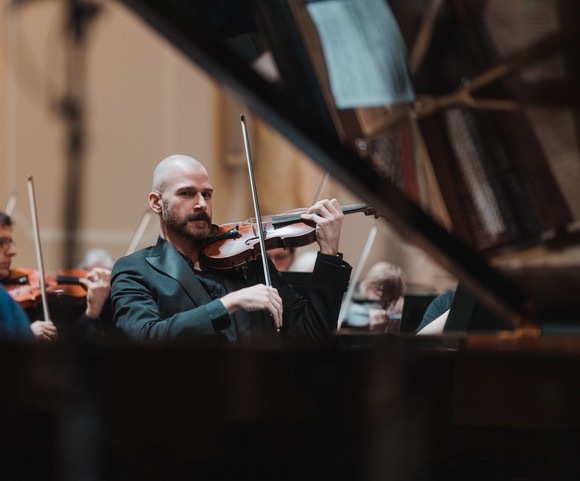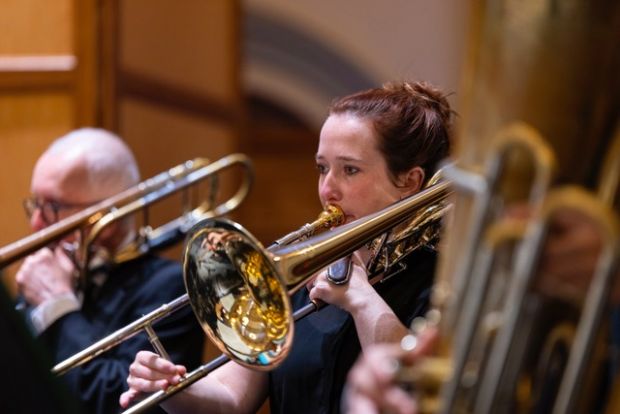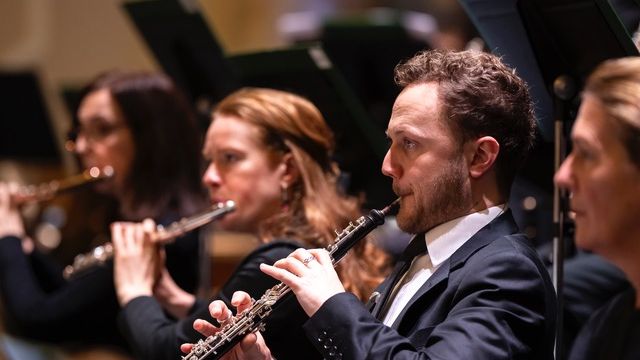Fate
The Adelaide Symphony Orchestra have once again excelled with a perfect program selection for their latest presentation, Fate, conducted by Martyn Brabbins.
Before the main program we are treated to an Acknowledgement of Country by Jack Buckskin arr./orch Ferguson – Pudnanthi Padninthi. With no conductor in sight, the piece is led by the rhythmic clapping of boomerangs from the percussion section. An orchestral reminder of the country we are all sharing.
Fate begins gently with Akimenko’s hauntingly beautiful Angel:Poem Nocturne. After a quick reset to allow for the piano to take starring position, the mood changes to Beethoven’s Concerto for Piano No.1 in C. Op.15. Then, following the much-needed interval to consolidate our thoughts and discuss with friends, the evening concludes with the mighty Tchaikovsky Symphony No.4 in F Minor Op.36.
Théodore Akimenko was the first composition teacher of Stravinsky and a student of Rimsky-Korsakov. A composer, pianist and musicologist, he was born in the Ukraine in 1876, and at age 10 was sent to St. Petersburg where he sang in the court a cappella choir. It was here he began to compose, and later teach.
Angel: Poem Nocturne is based upon the poem of the same name by Mikhail Lermontov, and uses expressive romantic Impressionism to embody the calm nocturnal mood of the poem. It is ethereal, conjuring visions of waves on the sea or a serene night.
It features lush harmonies, gentle orchestration, and floating melodic lines, evoking a sense of spiritual or celestial presence (hence the title Angel), and features some memorable viola lines, sweeping strings and moody brass & woodwind sections, all sensitively played. Conductor Martyn Brabbins’ careful conducting ensures that every element of this exquisite piece shines.

Beethoven's Piano Concerto No. 1 in C major, Op. 15 is a vibrant and bold work that marked his emergence as a virtuoso pianist and a daring composer. Though labelled as his "first," it was actually his third attempt at a piano concerto—the first to be published, hence the numbering.
Composed in 1795 and revised in 1800, the concerto premiered on March 29, 1795, in Vienna, with Beethoven himself as the soloist and is dedicated to Princess Anna Louise Barbara Odescalchi.
The concerto is in 3 movements , Allegro con brio, Largo and Rondo. Allegro scherzando. Guest pianist Benjamin Grosvenor Takes centre stage (or piano) for this epic concerto. Grosvenor is known for his rich, expressive playing combined with strong technique, attention to detail and ability to handle very demanding repertoire.
The first movement opens simply. Themes are built from this rhythmic idea, with the solo piano entering subtly, then exploring lyrical and virtuosic passages. It ends with a cadenza and a strong orchestral coda. Grosvenor revels in the many entrances and flourishes of this movement, and makes the difficult look easy.
The second movement is lyrical, introspective, and features prominent clarinet passages and a warm, intimate orchestration. Grosvenor and the orchestra sets a serene mood contrasting with the previous movement. When not playing, he is a picture of concentration and one wonders what is in his mind, is he listening or preparing for the next section or both?
The last movement combines wit, rhythmic vitality, and virtuosic flourishes. The piano and orchestra swap dialogue, ending with a spirited conclusion as if Beethoven is ‘showing off’ both in the piano and orchestral sections. The piano and orchestra blend in a perfect conclusion.
A Ravel encore was a welcome surprise! I noticed several members of the orchestra craning their necks to watch the speed and precision of Grosvenor’s technique!

Tchaikovsky's Symphony No. 4 in F minor, Op. 36, composed in 1877–78, is one of his most emotionally intense and autobiographical works. Often referred to as the "Fate" Symphony, it reflects a period of deep personal turmoil for the composer.
Composed in 1877–78, during a time of emotional crisis following Tchaikovsky’s disastrous marriage to Antonina Miliukova and his struggle with societal pressures around his sexuality, it is dedicated to Nadezhda von Meck, his wealthy patron and confidante, with whom he shared a deep emotional correspondence but never met in person.
The Symphony is in 4 movements – Andante sostenuto, Andantino in modo di canzona, Scherzo: Pizzicato ostinato and Finale: Allegro con fuoco.
The first movement opens with a dramatic brass fanfare symbolizing fate, and alternates between despair and fleeting hope, echoing Beethoven’s Fifth Symphony in its theme of struggle against destiny, ending with the return of the fate motif. It features the unmistakable Tchaikovsky string orchestration and magnificent work from the brass section!
The second movement is described by Tchaikovsky as a “procession of memories… sad and somehow sweet”. The highlight of the movement is a melancholic oboe melody.
The third movement is entirely played pizzicato by the strings, creating a whimsical, capricious texture. Tchaikovsky called it “capricious arabesques” with no specific emotional meaning. It is rare to hear an entire movement played pizzicato, and it creates a lull before the storm of the fourth movement.
The last movement is almost as if the orchestra has been holding back before the final onslaught. It is Tchaikovsky in his full glory, demanding full dedication and energy from every section of the orchestra. The effect is electric, brilliantly executed by the ASO.
With their latest offering, Fate, the Adelaide Symphony Orchestra prove that they are a driving force in Australian orchestral music. The entire program was a triumph in every way!
Barry Hill OAM
Subscribe to our E-Newsletter, buy our latest print edition or find a Performing Arts book at Book Nook.

